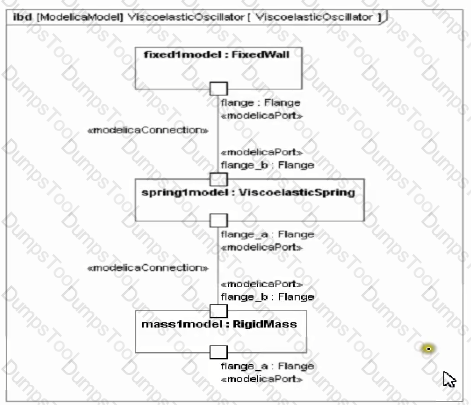Choose the correct answer
in executing a model-based systems engineering methodology, what should the first step m building the model be?
Choose the correct answer
A small project has chosen a widely-used SysML-based development method, and plans to tailor the method over the life of the project.
What Is(are) the most important consideration(s) for selecting a tool to support the project? \
Choose the option that gives the project the most flexibility
Choose the coned answer
What is one of the best reasons for a modeling Systems Engineer to use OCL?
Choose the correct answer.
Given the following diagram:

Assume that all stereotypes required by the SysML-Modehca Transformation specification (if any) have been applied but are not necessarily shown here Assume that FixedWall. ViscoelasticSpring. and RigidMass are fully defined in a Modelica library.
What else must be done to get this model ready for solving according to the SysML-Modelica Transformation specification?
Choose the correct answer.
What is a common rationale for defining and applying a profile to a SysML model?
Choose the correct answer.
An engineering learn has been charged to design and build an embedded real-time control system using COTS (Commercial Off-The-Shelf) purchased components where possible A technical risk for such a control system is that the system will miss (i.e . fail to respond to) critical inputs The project has the additional risk that there may not be any components on the market that will meet both timing and cost constraints
Given this, what information must be in the model before the engineering team can begin selecting and procuring COTS components?